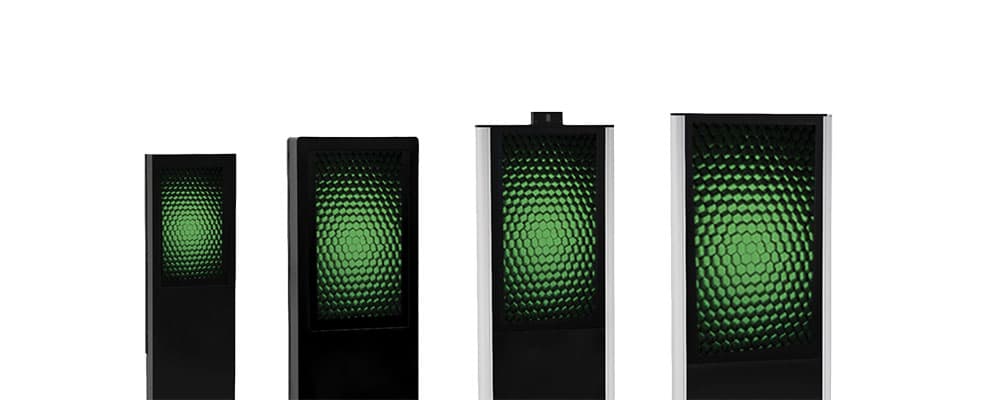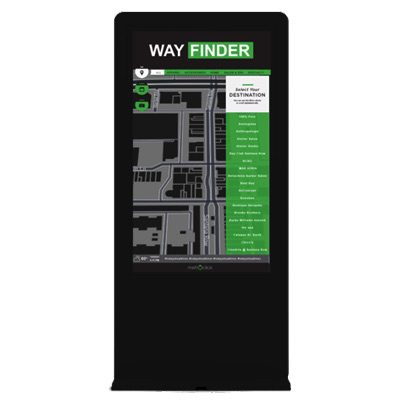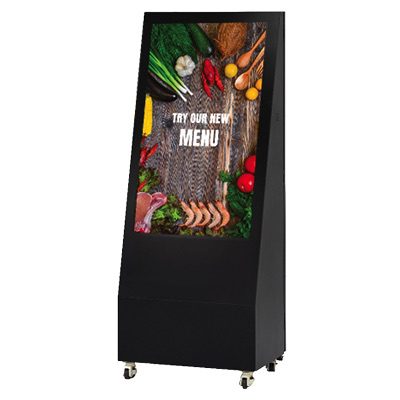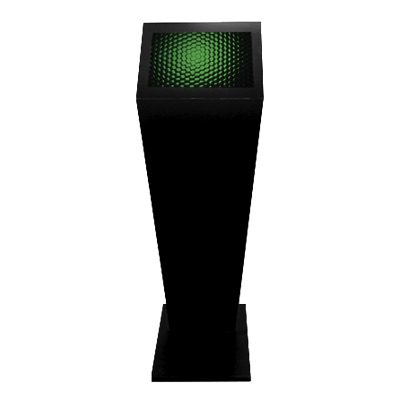Self Service Kiosk Solutions
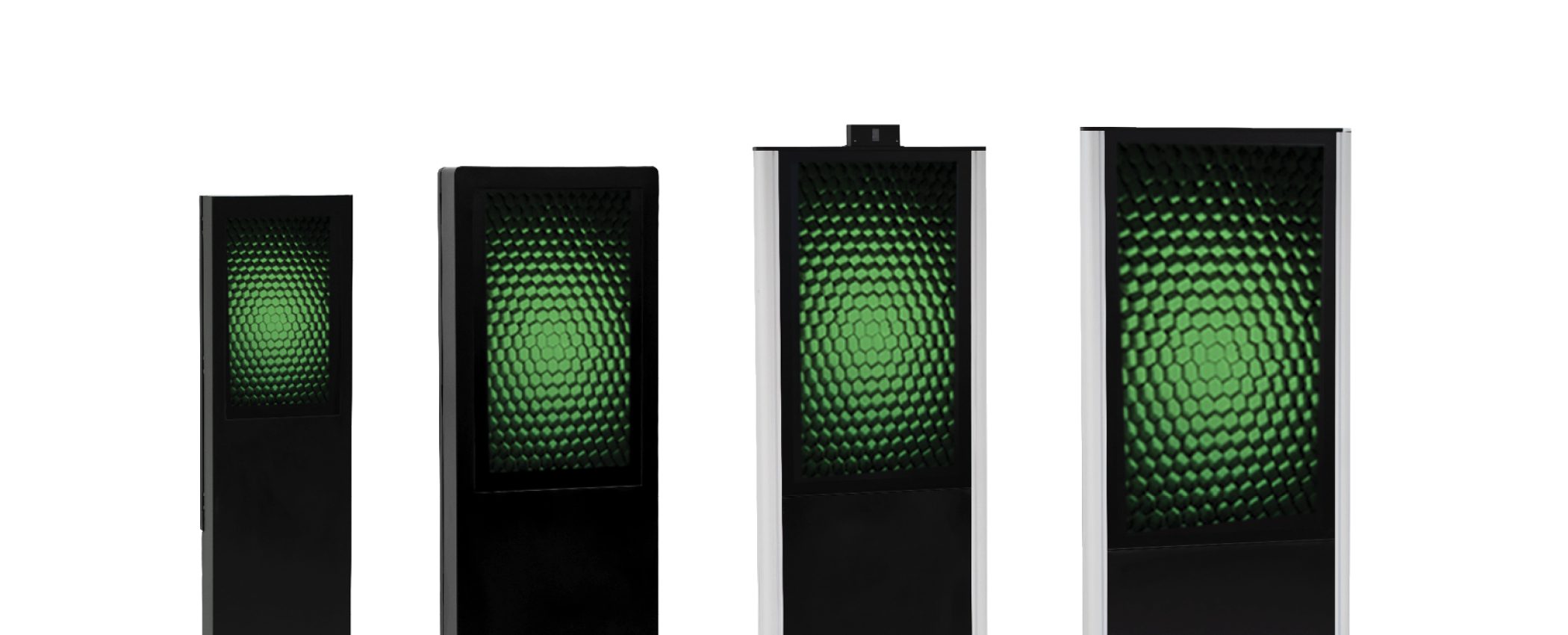
MetroClick’s Self-Service Kiosk Solutions Will Transform Your Business Model
MetroClick presents flexible self-service kiosk solutions suitable for a wide range of events and industries. Our customizable kiosks boast intuitive interfaces, offering a seamless experience for users. Implementing a MetroClick self-service kiosk not only enhances your operations but also creates an engaging and efficient platform for customers to access information and services. Don’t miss out on the opportunity to revolutionize your business with self-service kiosks. Reach out to our team at MetroClick and let us help you design the perfect solution tailored to your specific needs.
Our Kiosks are available for purchase or rental. Contact us for more info.
Self-Service Kiosk Solutions That Facilitate Transactions & Content Sharing
In many ways, touch screen self-service kiosks represent the ultimate embodiment of digital signage technology. Our self-service kiosks utilize advanced digital hardware components and sophisticated software to enable seamless communication between a business and its customers, or an organization and its clients. Contact our team and let us help you design the perfect self-service kiosk solution tailored to your organization’s needs.
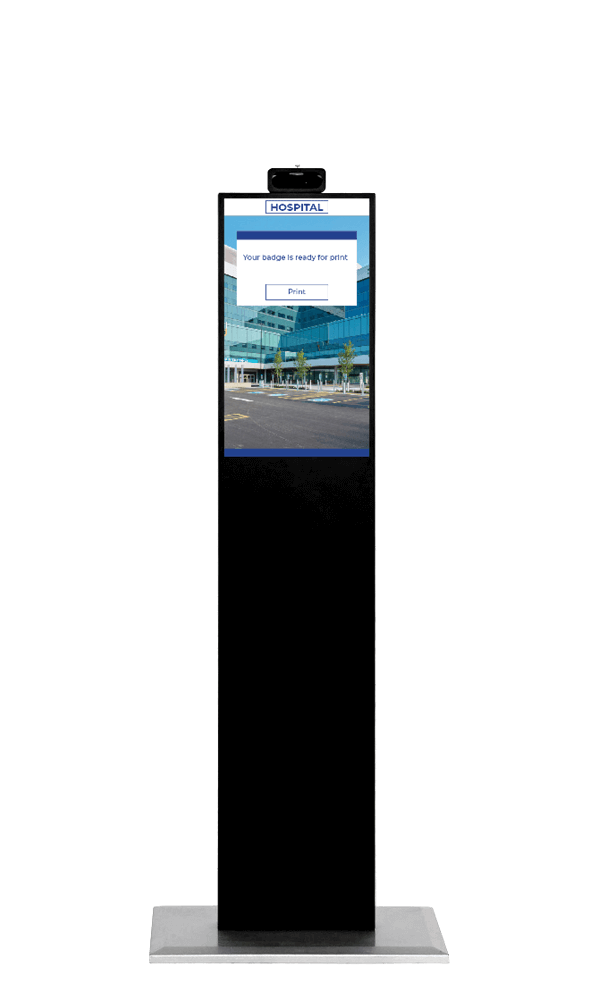
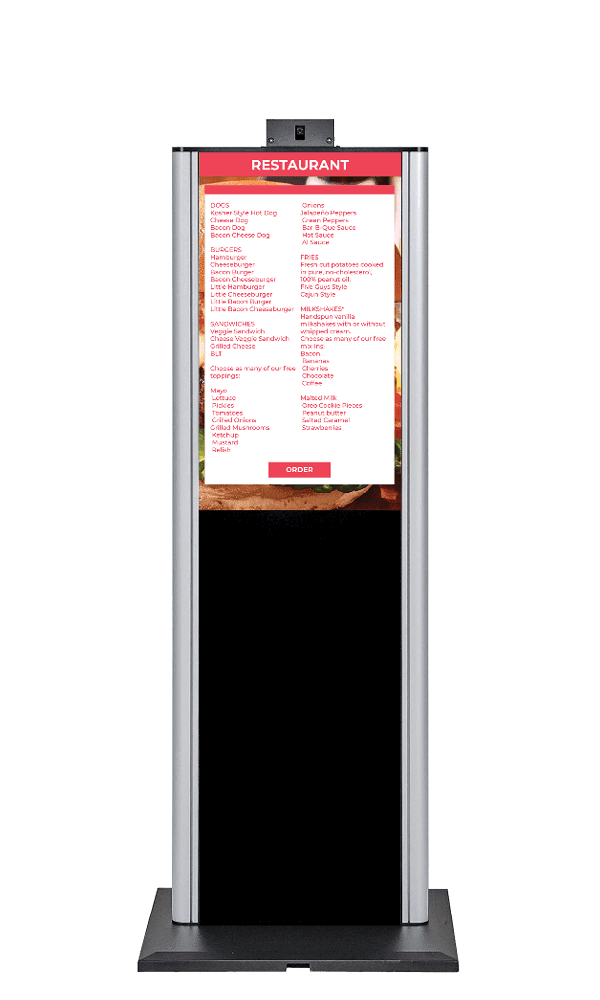
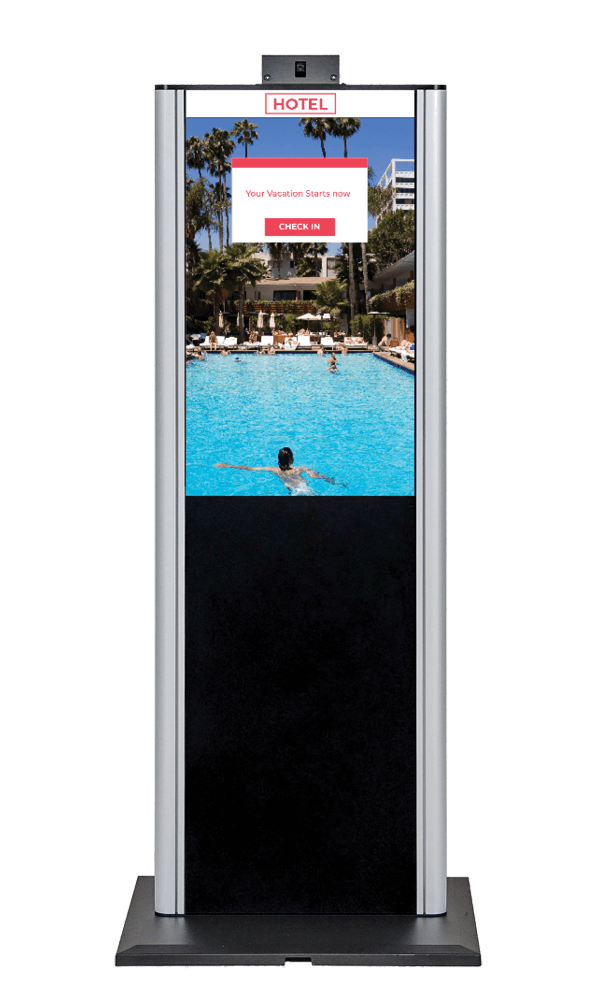
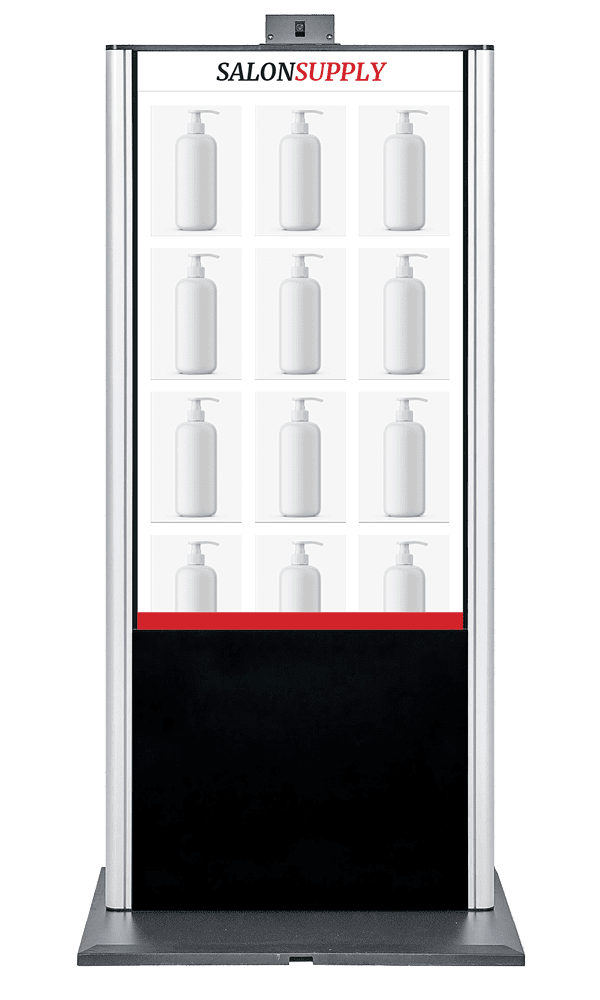
Empower the People With
MetroClick’s Self-Service Kiosk Systems
Explore the potential of MetroClick’s rental self-service kiosk systems and enhance your revenue while providing exceptional customer experiences. Our self-service kiosks are designed to enable customers to independently browse products, make orders, complete transactions and access important information, freeing up your staff to focus on essential tasks. With our customizable self-service kiosk solutions, we can cater to your business’s specific needs, and our team of experts is always available to provide ongoing support to ensure seamless integration and success.
More Information
What Are Self-Service Digital Kiosks?
What are self-service digital kiosks? These machines automate processes and deliver information to improve customer engagement.
Kiosk systems can be found in a wide range of industries, from restaurants and market stalls to airports and hotels.
Kiosks offer businesses numerous advantages, such as increased sales, improved user experience and increased foot traffic. Furthermore, they’re cost-effective solutions perfect for any business looking to streamline operations.
Types of self-service kiosks
Self-service digital kiosks are automated devices that empower customers to do a variety of tasks on their own. Businesses can utilize these kiosks for service delivery improvements, operational efficiencies, cost reductions and improved customer satisfaction.
Self-service kiosk systems can be found in many locations around the world. They serve a variety of functions, such as payment options, check-in services, branding and promotion activities and product management. You’re likely to spot them in restaurants, retail stores, airports or other public areas with high foot traffic.
Many self-service kiosks come in various models and sizes, including tablet kiosks that are secured within protective enclosures as well as stand-alone kiosks that can be mounted on walls. These devices help you save money by cutting back on labor costs and allowing employees to focus more time on other tasks.
Another type of self-service kiosk is a wayfinding kiosk, which can help you navigate an expansive building or campus without needing directions from staff members. These displays also show maps and other helpful info such as restroom locations or other essential points.
Self-service kiosks can also be utilized to collect data for marketing purposes. By gathering details about visitor numbers and repeat purchases made, these kiosks allow advertisers to target advertising campaigns or build mailing lists for future promotions.
Service kiosk systems can make check-in and checkout procedures faster. They screen visitors, track who should be seen next, and notify relevant employees automatically – saving time by preventing long lines at the front desk.
In addition to traditional service kiosk solutions, there are now self-service systems that incorporate artificial intelligence and other technological features. These kiosks can perform various tasks such as reading license plates for law enforcement or checking air quality to improve public health.
These technologies have the potential to revolutionize how businesses operate, making them essential components of today’s smart cities. Not only do they improve customer satisfaction and boost productivity levels, but they also reduce costs.
Components of self-service kiosks
Self-service digital kiosks are devices that enable customers to complete business tasks without assistance from a staff member. They’re designed to simplify operations, boost sales and boost customer satisfaction levels. Furthermore, these digital kiosks can help avoid long lines at stores or restaurants by helping people complete transactions faster.
Self-service kiosks are equipped with a touchscreen device and software, enabling customers to browse items, place orders, and pay independently. They are commonly found in fast food restaurants, grocery stores, and other retail establishments.
Kiosks can benefit employees by reducing the volume of customer interactions they need to manage on a regular basis, leading to decreased stress levels and improved productivity levels.
Some kiosks can even integrate with a point-of-sale system to allow customers to checkout without assistance. These setups save valuable counter space and can be tailored specifically for the needs of an individual store or restaurant.
Self-service kiosks also come equipped with a remote management system, enabling companies to monitor kiosk health, upgrade devices and resolve software issues remotely. This technology helps reduce maintenance expenses while guaranteeing minimal or zero downtime for these machines.
Kiosks can also be programmed to accept bill payments for services or goods rendered, and these solutions are equipped with the capability of handling sensitive personal information. Furthermore, these devices collect customer data and offer analytics which assist businesses in making informed decisions about their products and services.
These kiosks can also be configured to show custom signage that clearly explains their purpose to visitors. Custom messages are an effective way to promote your business and draw in new customers.
Self-service kiosks can be an efficient and profitable way to streamline processes and expand your business, but they come with their own set of challenges. They cannot replace human staff, and therefore need regular monitoring and upkeep in order to remain running optimally.
To guarantee your kiosks will function optimally, partner with a manufacturer who specializes in designing and developing such systems. Doing so can help you avoid potential issues or lawsuits. Furthermore, these manufacturers will have knowledge of ADA compliance – which requires all facilities to be accessible to people with disabilities – which ensures all facilities are accessible.
Benefits of self-service kiosks for businesses
Self-service kiosks are becoming more and more commonplace across a variety of industries, offering customers an easy way to increase satisfaction while cutting costs. But before businesses commit to installing one in their establishment, it’s important to weigh the pros and cons carefully.
First and foremost, businesses must select the appropriate model for their requirements. Kiosks come in various shapes and sizes from small tablets enclosed to free-standing stations. Before selecting a model – such as an automated ticket sales system, check-in kiosk or interactive catalogue – it’s essential to identify your requirements and business objectives.
For hoteliers, automated ticketing with a check-in kiosk could be the ideal solution. This system enables guests to book their seats and pay for them quickly without involving a reservation agent.
Another advantage of using a kiosk is that it helps you save on labor costs. By decreasing staff turnover and eliminating the need for front-line employees, you can lower your labor budget and free up more time to focus on other operations.
Kiosques can also be tailored to reflect your brand’s personality and image, making them more inviting for customers and increasing the likelihood that they’ll choose your establishment again in the future.
Kiosks provide your customers with more product details, which in turn allows them to make informed decisions about which items they want to purchase. Furthermore, they give you insight into customer purchasing patterns so you can create tailored promotions based on what items are purchased most frequently.
Self-service kiosks not only save you money on labor expenses, but they can also boost your profits by improving customer experience. Not only are they user friendly and customizable to provide exactly what your customers want, but their features also exceed expectations.
Moreover, they can help maximize space by freeing up floor space in places where it’s often limited, like stores or restaurants. Doing this saves a lot of money in the long run and keeps your brand image strong.
Examples of self-service kiosks in industries
Self-ordering kiosks in restaurants enable customers to customize their orders without going through a middleman, cutting down on staff costs by up to 30% and increasing profits by as much as 30%. They also enable diners to order more food, leading to an increase in average check size.
Kiosks are connected to a business’ point of sale system and give customers an expeditious overview of their purchase options. This enables customers to make informed decisions before handing over their credit card information, cutting down on errors and providing them with a superior customer experience.
These kiosks can be tailored to meet the demands of the industry they serve, and come in various shapes and sizes. Wall-mounted or free-standing, they may even boast touch screens and other technologies for increased visual appeal.
Kios not only provide customers with a way to place and pay for orders, but they can also assist businesses in offering consistent cross-sell and upsell promotions, cutting down on lines, and monitoring sales. Furthermore, kiosks have the capacity to screen visitors automatically, determine who should be seen next, and notify relevant staff members accordingly.
Kiosks can also be an efficient way to collect data for marketing campaigns or mailing lists, as well as monitor repeat visits. Furthermore, creating a more personalized shopping experience for customers increases their likelihood of buying additional items in the future.
Ticketing kiosks are popular at attractions and other venues that require paid admission. They can be used for check-in, scanning tickets, receipts, and ID cards – making them perfect for movie theaters, amusement parks, sporting and concert stadiums, museums, zoos, and other entertainment facilities.
Another type of kiosk is used in healthcare facilities to keep patients and visitors secure. Touchscreen kiosks are easy to wipe down after each use, preventing the spread of germs between patients and staff members. Besides keeping people and staff secure, these kiosks save time and money by limiting face-to-face interactions.
How to Choose a Self-Service Kiosk
Kiosks are an effective way to boost customer satisfaction and enhance service in your business. But selecting the right kiosk is essential for its success.
Location, purpose and size are three critical elements to consider when making your selection. Making an incorrect decision can have detrimental effects on both your brand image and customer experience.
Considerations for buying a self-service kiosk
Self-service kiosks can be an excellent way to boost sales and give customers convenient purchasing options. But it’s essential that you select the right one for your business needs based on factors like features and capabilities.
Capabilities: A self-service kiosk should be equipped with a variety of functions that enhance customer service and streamline processes. Common capabilities include ordering, payment, ticketing and wayfinding.
Automating and expediting a process with a kiosk can be advantageous to both your customers and employees alike, helping reduce wait times while increasing customer satisfaction.
A self-service kiosk can free staff up to focus on other tasks and reduce their workload, thus helping reduce overall operating expenses and save you money in the long run.
Design: The overall appearance and feel of a self-service kiosk will influence the customer experience it provides. For instance, an attractive kiosk that prioritizes privacy for its users will be more appealing than one poorly executed.
Color: Your kiosk should also be able to showcase your brand logo and other important information in a color that complements the rest of your business. Doing this will help increase brand awareness and foster consumer loyalty.
Kiosk Software: When selecting a kiosk, the software that runs on it should be taken into account. It’s best to source this separately from the hardware, giving yourself more choices when selecting the ideal product for your project.
Connectivity: Wi-Fi is a popular connectivity choice for many kiosks. However, other options can also be considered such as cell modems or hardwired networks.
Remote Monitoring and Maintenance: In the event a kiosk goes offline, it’s essential to have an alert system in place that notifies staff members so they can troubleshoot the issue. Doing this saves you the expense of sending out a third-party technician and increases your kiosk uptime.
Features and capabilities in a self-service kiosk
Self-service kiosks are electronic devices that enable customers to complete various tasks independently without the assistance of a trained employee. This could include placing orders for food, buying train or bus tickets, depositing and withdrawing money from bank accounts, etc.
In addition to traditional ordering and payment functions, these devices provide additional features and capabilities that businesses can leverage in a variety of ways. For instance, they give customers more details about a product or service, enable them to compare items, and even help sales associates close sales more efficiently.
Kiosks can also be utilized to administer customer loyalty programs and collect data on consumer behavior. The information gathered through these systems can be utilized to inform business decisions, such as how best to serve their customers in the future.
Self-service kiosks can improve customer satisfaction by cutting down wait times and the number of people waiting in line for services. This reduces stress for employees, allowing them to focus on providing the best experience for customers.
Self-service kiosks can also benefit businesses by increasing efficiency and reducing labor costs. For instance, the University of Nevada studied how airports use self-service kiosks to expedite long lines and reduce staff turnover.
Airports thus benefit from increased foot traffic, helping them remain competitive and boost revenue.
Finally, self-service kiosks are an effective way to engage customers and make them feel valued. They can be utilized for advertising specials and discounts, as well as being customized according to customers’ requirements.
Though a self-service kiosk can be beneficial to your business, there are certain scenarios in which they won’t function optimally. For instance, an older demographic might not be able to use one, or it may not fit the environment or location of the business properly.
To guarantee the success of your kiosks for your business, you’ll need to invest in a scalable solution with the appropriate device management platform. This will make it simple to deploy kiosks, monitor user activity and add new capabilities as needed. Furthermore, this enables you to track kiosk device health and performance in real-time; preventing users from experiencing any issues that could disrupt their experience with the kiosk.
Cost factors to consider with self-service kiosks
When considering installing a self-service kiosk, there are a few cost factors you should take into account. These include the kiosk’s hardware, software and warranty options.
Kiosks come in a wide range of prices and can be tailored to fit your specific requirements. When selecting a kiosk manufacturer, ensure they have experience delivering successful solutions for similar programs.
In addition to hardware and software components, kiosks also need a reliable network infrastructure. This could range from an Ethernet connection up to an intricate web of interconnected devices. It is essential that your kiosk supplier has the expertise to help you design an efficient system capable of handling the demands of a busy business.
Utilizing technology can make your business more efficient and reduce expenses. Additionally, it makes it simpler for customers to complete transactions with you, eliminating the need for staff assistance.
Self-service kiosks can also enhance customer service by eliminating wait times and offering a smoother, more dependable experience. As a result, customers are more likely to return to your business in the future.
Saving money on labor allows for cost-savings and increases revenue. Furthermore, freeing up staff time to perform other duties is an additional advantage of outsourcing.
For instance, if your online store requires customers to make payments via credit card, then a self-service kiosk can make purchasing products from your site much simpler than going through a cashier. Furthermore, it gives customers various customization options like removing or adding features from products easier.
Therefore, having a self-service kiosk can significantly increase your revenue, particularly if you have multiple locations with high foot traffic.
Kiosks offer businesses a cost-effective solution for streamlining customer service and improving CSI (Customer Satisfaction Index). They can be utilized in various industries, such as retail or restaurants; airports or other facilities where customer satisfaction is crucial.
Best practices for integrating self-service kiosks
When it comes to integrating self-service kiosks into a business strategy, there are a few essential best practices that businesses can utilize this technology effectively. By following these strategies, businesses can enhance customer service and boost operational efficiency.
Companies should first determine how a kiosk will integrate with their current systems. Integrations often involve peripheral devices like card readers and barcode scanners, or they can be built-into the kiosk’s software. For instance, robotic vending solutions can be integrated with self-service kiosks that take orders and serve customers.
Another important consideration when installing a kiosk is its location. The location can have an impact on customer satisfaction and the quality of services provided by employees. If a kiosk is situated in an overly crowded area, customers may have to wait longer before using it, potentially leading to lost sales opportunities.
Kiosks can assist companies in cutting operating expenses by enabling visitors to complete tasks without staff assistance. This frees the company to reinvest in more qualified personnel for internal operations.
Self-service kiosks are interactive tablets or touchscreen computers that enable customers to access information and perform activities independently without speaking with a staff member. These machines can be found in numerous places such as hospitals, airports, retail stores, and hotels.
For instance, a digital kiosk in a hospital can provide patients with an improved and more convenient experience. It also enables them to book appointments or check their room reservations, relieving administrative staff of some tasks.
Successful kiosk implementation requires understanding the company’s objectives and how success will be measured. Metrics like transaction volume per kiosk, average order value, and customer feedback can help businesses assess the efficiency of their system and identify areas for improvement. Furthermore, kiosks can be monitored remotely via the internet which enables companies to troubleshoot issues quickly and guarantee high levels of uptime.
Industries That Could Use Self-Service Kiosks
Self-service kiosks are an ideal way to boost customer satisfaction, optimize operations and deliver top-notch customer experiences. Not only that, but they can also reduce staffing requirements, optimize space management and collect consumer insights.
Self-service kiosks can be an asset to businesses such as retail, healthcare, transportation and hospitality industries. Kiosks allow customers to bypass long lines and make purchases without needing assistance from a cashier.
Self-service kiosks for retail industries
Self-service kiosks are increasingly common in retail industries, enabling customers to place orders and make payments without human interaction. Restaurants, petrol pumps and other businesses use them for efficiency in operations.
Kiosk technology offers numerous advantages for retail stores, including reduced employee turnover and more time for cashiers to assist customers. Furthermore, it boosts customer satisfaction by eliminating long lines and offering a secure contactless experience.
Additionally, it can be an advantageous way for customers to save money by paying with their smartphone instead of cash. Furthermore, businesses gain insight into customer behavior and receive real-time analytics on how well they’re doing.
With a kiosk, it is simple to create personalized promotions and deals tailored towards customers’ desires. This data can be utilized for increased sales and greater consumer loyalty.
It can also be useful for identifying which items sell the best. This data allows restaurants to optimize their inventory by offering more profitable items that customers will want to buy more frequently.
In the kiosk industry, there are many choices for hardware and software. It is essential to select a solution that works well for your business needs. This includes selecting an experienced vendor with an extensive range of services so you can pick which features are most relevant to you.
Before selecting a kiosk, it is important to take into account how many stations are needed, the environment they will be in and the uses for which they are intended. Furthermore, take into account how maintenance and management will be handled for these devices.
Additionally, you should search for a vendor that can integrate peripheral devices into their kiosks. These could include touch screens, speakers, printers that print out collateral and barcode scanners which process payments.
In today’s globalized world of COVID-19, businesses must strive to minimize human-to-human interaction for their customers. Kiosks make this easier than ever – they are now ubiquitous across industries from hospitality to healthcare and transportation.
Self-service kiosks for healthcare industries
Self-service kiosks are becoming a key element of healthcare organizations’ digital transformation initiatives. These technology solutions help address a workforce shortage and enhance patient experiences while increasing efficiency.
These solutions can be utilized for a range of tasks, such as patient check-in and registration, symptom checks and health alerts, medical record keeping, patient scheduling, telehealth services and payment collection. Furthermore, they are easily integrated with medical practice management software or EMR systems to simplify charting procedures and data exchange between patients and their care givers.
One of the primary ways self-service kiosks can enhance efficiency in healthcare settings is by decreasing waiting time for patients. This is especially critical in high traffic places like hospitals or clinics where long queues are common. Furthermore, having kiosks available for patients to use improves the quality of service provided by hospital staff members, according to Juelg.
Furthermore, self-service kiosks can enhance productivity and efficiency by enabling multiple stakeholders to quickly access information and exchange data. This facilitates better communication between departments and encourages collaboration across the healthcare industry.
Self-service kiosks can improve productivity in healthcare by eliminating the need for paper intake forms. This is especially beneficial to practices that must keep a large inventory of paper forms, which is costly and takes up valuable storage space.
Kiosks can also be incredibly beneficial to medical practices looking to reduce their environmental footprint, according to Boyce. Unlike paper forms that get discarded after patients leave, self-service kiosks enable practices to collect and store data digitally – saving them money, eliminating paper waste, and cutting down on energy consumption.
Transparency Market Research recently identified the health and medical sector as the fastest-growing end user segment for kiosks, due to increased demand for improved healthcare services and cost efficiency measures.
Kiosks can be especially advantageous to healthcare providers, as they reduce operational expenses and reallocate staff resources onto more important tasks. This also enables healthcare providers to create new service offerings and revenue streams.
Self-service kiosks for transportation industries
The transportation industry can utilize self-service kiosks to streamline operations and boost customer satisfaction. Airports use them to reduce passenger wait times and boost staff efficiency; hospitals and doctors offices use them for administrative efficiency too. Ticketing businesses also feature kiosks where customers are given information about their options as well as the ability to purchase tickets quickly.
Self-service kiosks offer customers a convenient, personalized way to get information and services – ultimately improving their experience and increasing revenue for businesses. These interactive kiosks provide customers with an engaging, high-quality customer experience that’s growing in popularity.
Industries that could benefit from self-service kiosks include retail, healthcare and tourism. These businesses often have long waiting lines and need to reduce time spent on tasks. Furthermore, they need to manage large numbers of customers quickly.
Retail self-service kiosks are frequently found in grocery stores and big box shopping centers, alongside crewed cashier stations. Restaurants and fast-food chains may also use them for a more efficient checkout process for customers.
Kiosks are an excellent way to display information such as prices and product availability. Furthermore, they can be utilized for processing payments, making reservations or other bookings.
Your choice of kiosk will depend on your application, but they can range in size from a tablet device mounted at an angle to full touchscreens that enable user interaction with staff members.
It’s essential that your kiosks meet ADA requirements. Doing so can shield your business from lawsuits, monetary damages, and civil penalties.
Some kiosk manufacturers can assist you in designing an accessible solution. As this can be an expensive and complex process, working with a manufacturer that has experience designing accessible projects is recommended.
Travel and transportation businesses can benefit from installing accessible self-service kiosks that are user friendly for seniors and people with disabilities. These kiosks can increase customer loyalty and boost brand awareness by offering an improved travel experience.
Self-service kiosks for hospitality industries
Hotels are an ideal industry to benefit from self-service kiosks. These machines allow guests to check in/out, pay their bill, get a key card, book restaurant reservations or upgrade to suites all without waiting in line at the front desk. Not only that, but these kiosks reduce front desk lobby wait times and queues too – making the whole hotel experience much more comfortable for your guests.
These kiosks allow hotel staff to handle more important tasks, like providing a map of the property and answering any queries from guests. This helps them deliver an improved guest experience and boost satisfaction scores.
Self-service kiosks allow guests to order food and drinks at their leisure, saving time and money while dining out or at the bar. Furthermore, using a kiosk helps prevent mix-ups between guests and employees, thus decreasing customer complaints.
Finally, these kiosks can also collect useful data about guests and their stay history. This data can be quickly accessed through integration with the hotel PMS system, giving hotel staff the chance to create personalized experiences for guests.
Some kiosks can even connect to RFID customer cards in order to collect data about a guest’s beer and wine consumption during their visit. This data can then be used for improving service, such as adjusting prices or serving the correct amount of drinks to customers.
Kiosks are an excellent way for hospitality businesses to accentuate their brand image and provide guests with an authentic luxury experience. These kiosks allow guests to check-in and out of their room easily, offering them a high-quality stay that will encourage them to return again.
The hospitality industry is a high-volume business, and to remain competitive you must focus on providing great experiences for guests. Fortunately, there are many options when it comes to self-service kiosks for hotels and other industries.
Selecting the ideal kiosk software for your hotel is a crucial step in streamlining operations and giving guests an unforgettable experience. It should integrate easily with your PMS, requiring minimal interaction from staff members. As these units will be visible to many people, make sure they’re robustly constructed. Furthermore, invest in maintenance and repairs so your kiosks remain working optimally.
The Future of Self-Service Kiosks
When consumers order from a kiosk, they don’t have to worry about being misunderstood or having their order incorrect. This helps reduce miscommunication, which in turn can prevent many negative reviews and angry customer complaints.
Kiosks also give businesses the unique chance to collect invaluable customer data, which can be used to more precisely target promotions and upgrades. This is essential for any company looking to offer a tailored experience for its customers.
Emerging trends in self-service kiosks
With the rapid advancements in self-service technology, we can anticipate an array of trends within this industry. These advancements can help businesses enhance customer service, elevate their brand experience and boost profitability.
One trend we can expect to see is an increasing use of mobile technologies in self-service kiosks, as a means to provide customers with an enhanced brand experience. This could include cloud-based software for adding promotional content as well as updating and troubleshooting kiosks without needing physical contact.
We can expect to see more kiosks integrated with a live reporting system, providing businesses with an insightful view into their operations and helping them make informed decisions on cost-cutting or sales growth. This technology has applications across various industries and provides customers with an enhanced customer service experience while driving profitability.
Another trend we can expect to observe is an increase in contactless payments made via kiosks. This growth trend is being driven by both a need to protect people from fraudulence and convenience.
Businesses are turning to self-serve kiosks in an effort to provide customers with speedy and efficient service. This helps reduce wait times for customer inquiries and keeps clients satisfied with a company’s products and services.
In today’s increasingly personalized and impersonal world, businesses across all sectors are adopting the self-service trend – from restaurants and hotels to airports and shopping centers.
Kiosks are an efficient way to save staff time by eliminating repetitive tasks requiring human interaction. This can be especially helpful in businesses with high traffic front of house areas or those that experience long lines of customers.
At a recent Networld Media Group webinar, an array of self-service technology experts gathered to debate the future of self-service kiosks. All agreed that this technology is here to stay and will become an essential element in every business’ operations.
Predictions for self-service kiosks evolution
The future of self-service kiosks looks bright and promising. They are becoming a ubiquitous part of daily life, used in industries such as entertainment, healthcare, transport and education. Their advantages are numerous: customer convenience, customization options and reduced wait time for transactions.
The market is expected to maintain its growth trajectory throughout the forecast period. This is because consumers have become more acquainted with these interfaces and seek out better ways to complete certain tasks without human involvement.
According to a report released by IoT and mobile device management firm SOTI, 73% of shoppers prefer retail self-service technologies over traditional customer service methods. Furthermore, 70% expect self-service options for commercial questions or complaints.
In the Food & Beverage industry, kiosks can cut labor costs by eliminating extra employees during rush hours. As a result, restaurants are better able to manage their budgets more effectively during high-volume periods.
Kiosks are also an invaluable asset for restaurants, enabling them to quickly learn how to curate their menus based on real-time data on what customers prefer. For instance, sandwich companies could consolidate less popular bread choices on the kiosk in order to improve efficiency and customer satisfaction during lunchtime.
According to a recent study by Tillster, installing kiosks in restaurants can increase average customer spending by 30%. This is because kiosks take away the intermediary (cashier) from ordering processes, freeing that employee to greet customers or help out with cooking during high-volume times.
Customer loyalty and satisfaction will be increased over time as these measures reduce errors and enable businesses to provide personalized services for their clients.
North America is forecast to experience faster growth than other regions in the self-service kiosk market, as consumers are increasingly open to purchasing items through these devices. Furthermore, this region boasts a high level of disposable income.
Additionally, the growth of interactive kiosks can be attributed to customers’ increasing adoption of smart devices. This will enable them to access some kiosk functionality directly on their smartphones or tablets. It also gives businesses the ability to monitor system performance and identify and schedule maintenance for increased kiosk uptime.
Challenges and risks for self-service kiosks
The future of self-service kiosks lies in providing an enhanced customer experience. However, this evolution also poses its own challenges and risks; these could include reduced employee productivity as well as data security threats from cyber adversaries.
Businesses adopting self-service kiosks must guarantee a consistent user experience across all locations. This involves regularly maintaining each device, installing updates and fixes, as well as protecting it from malware attacks.
To effectively utilize kiosks, it’s essential to consider their intended purpose and who will use them. This will determine the size, functionality and number of stations required for each kiosk. It also helps decide what peripheral devices will be necessary – printers for printing receipts, tickets or other take-away collateral as well as labels or badges for identification purposes.
Kiosks that accept payments require card readers. These can be EMV, chip and pin or contactless solutions. Furthermore, these card readers can be integrated with other hardware components like magnetic stripe or RFID readers for loyalty or access control systems.
Kiosks often go in public areas with a high foot traffic, so they need to be robustly designed and constructed from quality materials. Not only will this extend the lifespan of the kiosk, but it will also reduce maintenance expenses.
Another challenge faced by businesses that install self-service kiosks is ensuring they are accessible to all users, regardless of age, disability or other factors. This is especially pertinent for older customers or those with low to no technology skills.
To guarantee an optimal user experience, it’s essential to establish a comprehensive set of requirements from the start. This requires close collaboration with the client in order to identify all known issues and goals up front – this is known as Project Phase Zero – the initial step toward developing an effective self-service kiosk solution.
Self-service kiosks can be an effective tool to boost sales and enhance customer experiences at restaurants. Unfortunately, they also tend to cause increased costs and decreased staff productivity, so it’s essential that you select a kiosk solution that meets both your business requirements and budget.
Innovation & growth opportunities for self serve kiosks
The future of self-service kiosks looks bright, as this technology continues to revolutionize customer experiences across many industries. From banking and financial services to retail, government, travel/tourism and even healthcare – kiosks are becoming more commonplace around the world.
Banks are increasingly using kiosks to offload some of the work of tellers, providing modern and convenient options for their customers. Furthermore, this helps them foster more meaningful face-to-face interactions.
One of the primary challenges with kiosks is getting customers to use them. A visually appealing and engaging kiosk is essential, but it also needs to ensure that any content displayed on them is clear and easy to comprehend.
Another challenge faced by kiosks is making them accessible and intuitive to both customers and staff. This is especially crucial if staff are either unavailable or busy when customers attempt to use them.
Furthermore, it’s essential that the system be easy to update with new product data. This gives customers access to updated details about what they’re purchasing without waiting for a staff member to assist them.
This is essential, as it gives customers the opportunity to learn more about a product before they purchase it, potentially increasing their satisfaction level and loyalty towards the brand.
Kiosks also provide a selection of payment methods, such as magstripe, EMV chip cards and mobile payments like Apple Pay. This makes it simpler for customers to select their preferred method and save time waiting in line at the counter.
Self-service kiosks have a bright future, but there is room for improvement and development. To maximize their effectiveness, businesses must set objectives and measure results from day one.
Businesses can track how long it takes customers to finish a transaction at the kiosk or how much money they spend. This data can then be used to optimize the process and increase customer satisfaction as well as overall profitability.
Self-servicing kiosks have made their way into the retail mainstream with numerous retail malls adopting them. As more consumers are introduced to interactive kiosks, they will become accustomed and reliant on them. Much like the ATM revolution in the middle 80’s, kiosk technology is poised to take over the retail shopping experiences by storm.
This rapid shift in the consumer mindset for the next five years will force many retailers to follow suit. Industries such as the retail, restaurants, airline, hotel channels are finding tremendous savings and efficiency via the use of self-service, ordering, payments, self-check-in, etc.
Unique Benefits Of Using Kiosks
Self-service kiosks are unique because they benefit both the consumer and retailer. These benefits are quite substantial, enabling consumers to gain control over their own purchasing by providing them with a myriad of options that allow them to customize their orders fitting their personal needs. Another big benefit to consumers is that the touchscreen kiosks provide an excellent way for them to shop quickly if their time is limited.
For the retailer, the benefits are immense, including cost savings associated with labor; managing order process flow more efficiently; and providing a dynamic, interactive tool to market their variety of products to consumers.
All MetroClick kiosks can be designed and customized to include digital photo booth features, signage, interactive functionality, and a flexible software system.
Implementation Self Help Kiosks
Implementing self-help kiosk rollout in one store or a chain of stores- is fortunately far-less daunting than it may appear.
An information kiosk can either be a stand-alone unit or one that is directly linked into a store’s technology platform. Generally, the A-to-Z process from concept to actual rollout can happen in less than a few months.
Plan It Well
The key to accomplishing a successful, money-making retail kiosks rollout is effectively planning and managing the rollout and its costs.
Expertise in kiosk implementation is critical to managing not only pilot store tests but its subsequent rollout.
Failure to implement a well-planned, well-managed rollout will undoubtedly increase your overall costs, not to mention burden your existing staffs unnecessarily, hampering their ability to manage the system once it is up and running.
Capture The Gold
That being said, self-servicing kiosks can provide the retailer tremendous upside on two key profit and loss fronts:
1. Managing expenses associated with labor.
2. Increasing top-line revenue by enticing consumers to make more purchases through introductions of new products, up-sells and combo offers.
The ultimate winner will be the retailer who aggressively rolls out self-service kiosks system-wide in order to capture the total marketing and sales potential that kiosks deliver at the store level and home office.
Create Efficiency
Self-service kiosks essentially provide the infrastructure from which merchandising and marketing programs can seamlessly stream through store operations directly to the consumer.
This management system becomes a tremendous ancillary benefit to the retailer, ultimately allowing them to more effectively manage and sell their products to their consumers on a national, regional or store level.
Talk to Metroclick about your requirements today.
Grow Or Fade
The future is bright in retailing, provided that steps are made to continually deliver what the consumer wants: more options they can choose from in less time, customized to their needs.
Internet-age consumers are beginning to want that same speed and customized simplicity in their retail-store buying experience. Retail industries that can deliver on this consumer desire will prosper during the next decade.
Those that choose to continue to deliver their products and services in a slow, methodical way will find themselves at a distinct competitive disadvantage.
Self-storage kiosks enable prospects to rent storage units 24 hours a day even if the manager is not available. A potential customer can take a virtual tour of the facility, select a unit, purchase a lock, pay for the unit, print out a rental agreement, and even sign up for tenant insurance.
Testimonials From Customers
While managers remain available to greet customers, answer questions and take payments, using interactive kiosk frees up my staff to pursue revenue-generating activities.
In the age of ATMs and self-service checkout at home improvement centers, some customers prefer the speed of using a kiosk to striking up a conversation with a living, breathing manager.
Others take longer to warm up to a self-service machine. The kiosks also tie with another modern piece of equipment: the cell phone.
Our managers take cell phones with them and a lot of times someone will call and they can direct them to the kiosk after hours.
Should a customer need assistance with the kiosk, there is a lifeline to immediate help. There is a call button on the kiosk that goes directly to the manager or to our call center to assist them.
For myself and many other self-storage operators, technology has allowed us to become more efficient and profitable in an increasingly competitive environment.
While the high cost of having staff on duty forces most self-storage facilities to be closed on holidays and Sundays, owners with a kiosk are finding renting units on off-days is an easy way to attract customers when their competitors are closed.
Many customers prefer the privacy and ambiguity of buying personal items at such a checkout. Likewise, they would rather give their personal information to a machine as in the case of pharmacy health checks.
Not only can kiosks cut down on labor costs but they can also deal with information.
They can, for example, offer information either on screen or as a print out to be taken away; this could be public information as in the case of local authority councils or maybe in-store promotions, reward vouchers, or up and coming events.
Therefore turning the outdoor kiosk into an effective advertising and marketing tool, encouraging return custom, an achievement that your current employees may not have the opportunity or time to achieve with limited interaction time with the customers.
Immense Benefits
Self-service and interactive kiosks are great tools for collecting information. Surveys can be added to kiosks to enable them to gather market research about your customers, their spending habits and their needs.
Just think how knowing this information about your customers could help your business. It could unlock the full potential of your business and provide your customers with exactly what they want so that they don’t go to your competitors. And as you know, happy customers recruit new customers by word of mouth, this kind of advertising is worth its weight in gold.
Kiosks can be built to any custom design so that ‘Your’ kiosk can be made to a style and design to suit the premises of where the kiosk is to be installed. This means that the kiosk will only add to the ascetics of its environment, and not detract from it.
In short, a kiosk in your company can increase order values, improve profitability, up-sell as well as cross-sell, whilst improving staff productivity. No wonder then that so many businesses are now using kiosks.
Contact Us
Have questions? Interested in a quote or RFP? Contact us today and one of our specialists will follow up ASAP!
California
804 Anacapa Street
Santa Barbara, CA 93101
Florida
7630 NW 25th ST
Suite 2A
Miami, FL 33122
Metroclick Offices
T: 646-843-0888
New York
239 West 29th Street
Ground Floor
New York City, NY 10001

